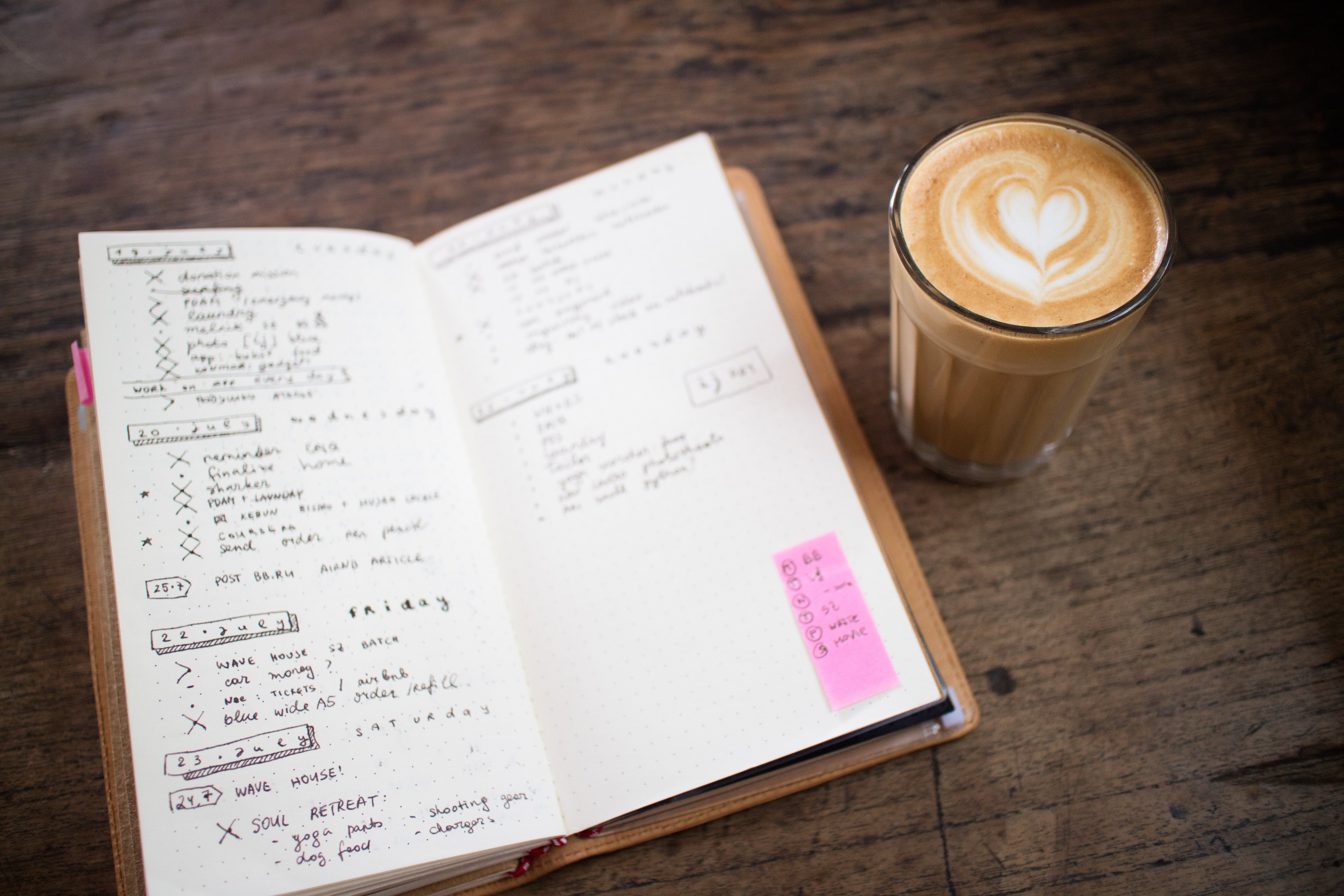Article
A good New Year’s Resolution for physicians: Create a bullet journal
Author(s):
Do you have a million little sticky notes with ‘to-do’ lists scattered around your house and office? Here’s a solution.

Like most Americans, my New Year’s resolutions rarely make it past Valentine’s Day. But last year, something changed. Instead of resolving to lose weight, exercise more, and stop binge-watching TV, I decided to focus on something a little more attainable. I vowed to create and consistently use a “bullet journal.” Not only did I manage keep my resolution for the entire year, using a bullet journal helped me to become more organized, productive, and mentally clear.
Who can benefit from a bullet journal?
Do you have a million little sticky notes with ‘to-do’ lists scattered around your house and office? Instead of trying to remember where you left that very important task reminder, write it in your bullet journal.
Have a hard time staying on top of your schedule? You can keep your daily schedule in your bullet journal, as well as a log of future tasks and deadlines.
Have you ever awoken in the middle of the night with a great idea, convinced yourself that you’ll remember it in the morning, only to find inspiration gone in the morning? Keep your journal next to your bed, and jot down that epiphany!
If you have a bad day at work or a spat with a family member, avoid lashing out by writing down your feelings in your journal. In addition to venting about negative emotions, you can also track positive experiences and things you are grateful for. This is also a great place to write goals, dreams, and plans for the future.
Want to lose a few pounds? Keep a food and exercise diary in your bullet journal. You can also log your exercise, sleep hours, and water intake.
A bullet journal can be used for tracking just about anything. Ashleigh Payne, MD, a pediatric cardiologist in Dallas uses her bullet journal to “keep track of everything, from call lists to learning goals, CME, and credentialing information.” She also uses the journal for tasks outside of work: “I track books I want to read, projects I’m working on, scheduling for kids, and vacation planning.”
What is a bullet journal?
A bullet journal is just a personalized diary, designed to be both efficient to write in and to quickly find information that you have written. You don’t have to write in it everyday (I skipped days, weeks, and even a month last year), but the more you log, the more benefit you will get from it.
Ryan Carroll, the original creator of the bullet journal, calls the technique “mindfulness practice disguised as a productivity system.” I found this to be true-the simple act of writing down tasks that I want to accomplish, goals that I have for myself, and my emotional state with certain triggers has helped me stay focused and mindful. I feel less anxious about forgetting tasks or running up on deadlines. I can prioritize aspects of my life that I want to give a little more attention to, like watching my diet or monitoring my blood pressure.
While there are books, videos, and even a TED talk on how to create a bullet journal, you don’t necessarily need to invest a lot of time or energy. In fact, writing in this type of journal is speedy because of the use of bullet-points or lists, rather than fully written sentences and paragraphs. Carroll suggest using different icons for your bullet-points to signify details, like using an asterisk to demarcate an urgent task, or an exclamation point for an idea. You can get as detailed as you like with your bullet-points, or you can keep them simple, as I do.
As Jacqueline Koski, DO, a family physician who uses this tool says, “the best part about a bullet journal is that it is 100% customizable. I used to get planners and feel guilty if I missed a week or a pre-printed list. Now if I miss a list, I flip a page and keep going. My bullet journal reflects my pace in life, guilt-free.”
How to start journaling
To start, all you need is a blank notebook. You’ll want it to be something relatively small and portable-think about 6 x 9 inches with a sturdy cover. If you can find a notebook with a place to store a pen, even better.
Once you have your notebook, you will need to number all of the pages. Label the first page, “Index,” and use it to track all of the content of your journal by page number. Having an index makes it easy to search for things you have written. For example, page 10-12 of my bullet journal includes a list of ideas I have for articles I want to write. If I fill up those pages, I can continue the list on a later page, say, page 27, and I’ll just add that to my index, like this:
Story ideas: Page 10-12, 27
After the index page, many bullet journalers like to leave pages for each month of the year as a placeholder to keep track of important events or tasks that will come due. Although I started my journal this way, I found that I preferred to use my desk calendar for tracking my schedule, and I abandoned this part of the journal. Instead, I focused on using the journal to keep a daily “to-do” list, which I could check-off as I completed tasks. Whenever I thought of something new I wanted to keep track of, like books I wanted to read or places I wanted to go on vacation, I just created a new page and added it to my index.
One useful aspect of the journal was using it to remember the positive things in my life and practicing gratitude. Studies show that the simple act of focusing on the things you are grateful for can improve your mood and outlook, and may even improve your health. I found that looking back on my page 7: “Good Things that Happened to Me This Year” was especially helpful in counteracting negative days.
Keeping track of my moods and feelings was also useful. I could flip back and see patterns and triggers, which helped me to anticipate situations that caused me stress. For example, when I decided to go on a diet in July, I used my bullet journal to monitor my calorie intake, exercise, weight-and mood. I even showed my patients my diary entries to help motivate them to start a diet- “You see, on day 4 I wrote ‘cranky and irritable’ but on day 10 I wrote ‘great mood and good energy’!”
For more ideas, just google “bullet journal”-there are more than 180 million search results! But don’t get overwhelmed. You don’t have to have color-coded entries or perfect handwriting to get great results. You may even free up enough time for another episode of bingeworthy TV.
Rebekah Bernard MD is a Family Physician in Fort Myers, Florida and the author of Physician Wellness: The Rock Star Doctor’s Guide.





